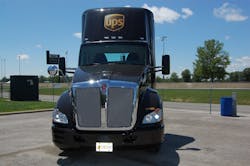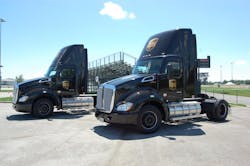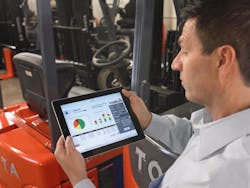One of the top goals among many truck fleet maintenance managers today is how to take all the vehicle data available via telematics technology and then precisely “optimize” component replacement schedules – right to the point where entire useful life of a component is fully expended.
The trick, though, is how to calculate that “optimal life” for widely different operating conditions – a strategy Dale Spencer, who oversees telematics and fleet maintenance at United Parcel Service, calls “condition-based” maintenance.
“This is the best form of vehicle maintenance,” Spencer, a 36 year UPS veteran, explained to Fleet Owner. “It’s the most cost effective because you get to use up the full life of the component.”
For example, changing out brake pads that have 30% more life left in them is – in Spencer’s view – money left on the table. That’s where precise vehicle histories built with telematics data can save fleets a bundle.
Yet such data also helps reduce the amount of maintenance that needs to be conducted as well, Spencer stressed – which is also a huge cost saver for UPS, which operates a ground fleet numbers comprised of over 100,000 pieces of equipment.By Spencer’s estimation, Big Brown has cut the number of preventive maintenance inspections (PMIs) the ground fleet requires from 230,000 annually to down around 120,000 – all due to the use of precise equipment data targeted to specific equipment operating cycles.
That’s a big deal for a fleet where its local delivery trucks are kept in service for up to 20 years, while Class 8 tractors stick around for 10 to 12 years.
“That took a lot of analysis and a lot of reasoning with our technicians,” he explained. “In many cases, they were uncomfortable not seeing our vehicles as often for they feared the impact of unexpected downtime. But once they saw that the telematics-backed schedules worked, they became believers. It required an evolution of buy-in.”
The benefits for UPS technicians is that it simplifies the tasks they must manage, as telematics data helps them target what needs to be done – and not done – in terms of vehicle upkeep.
“The way we view it, telematics is another tool in their bag for helping us get more usable life out of our vehicles at a lower cost,” he explained.
Similar condition-based maintenance strategies based on telematics data are being for related fleet equipment as well, such as forklifts,
For example, Toyota Industrial Equipment and Sprint recently launched what they are calling T-Matics Mobile and Command; a telematics system that can be embedded in new units on the production line or added via an aftermarket installation, even on non-Toyota brands.Bob Ragsdale, fleet manager for Toyota Forklifts of Atlanta, explained to Fleet Owner that one of the biggest advantages of this new telematics offering – introduced back in April after two years of testing – is helping his four dealership locations “fine-tune” maintenance plans for customers.
“First, it helps us build a complete maintenance history for each piece of equipment being tracked and then allows access to their ‘hour meters’ so we can better coordinate PM [preventive maintenance] service schedules among our 50 technicians,” Ragsdale pointed out.
Generating more precise maintenance histories lets Toyota Forklift’s technicians time major repair work more efficiently, he emphasized – especially when it is spread out across Atlanta’s 132-plus square miles; a city ranked seventh in the nation for the worst traffic congestion.
“Planning ahead is one the keys when it comes to forklift maintenance,” Ragsdale stressed. “We want to schedule maintenance in such a way that it’s done at the right time with minimal downtime for our customer and optimal travel times for our technicians.”
“It prevents us from surviving equipment too soon or too late and really reduces the travel time for our technicians – all without the labor-intensive manual processes we used to use,” he noted. “Those are the big benefits for us.”
About the Author
Sean Kilcarr
Editor in Chief
Sean Kilcarr is a former longtime FleetOwner senior editor who wrote for the publication from 2000 to 2018. He served as editor-in-chief from 2017 to 2018.


